This project is a journey into the fusion of digital design, biomimetic structures, and fabrication logic. Inspired by natural patterns and organic growth, the pavilion emerges as a seamless blend of computational precision and artistic expression.
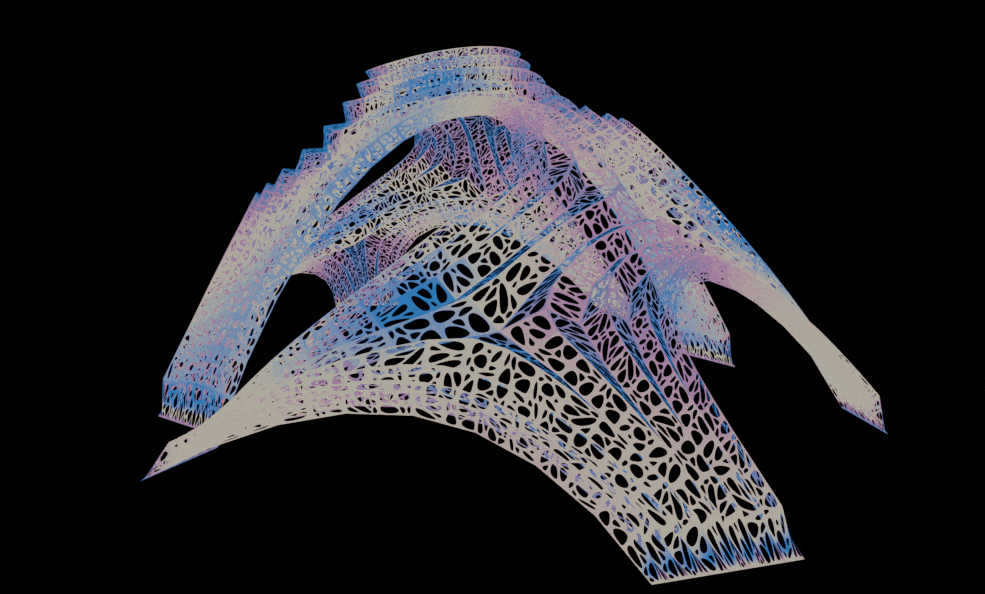
Concept Development – Finding Inspiration
The initial spark for this pavilion came from observing organic growth patterns found in nature—how trees branch, coral forms, and neural networks spread. The goal was to translate these principles into a self-supporting, lightweight structure that feels both futuristic and deeply rooted in natural systems.
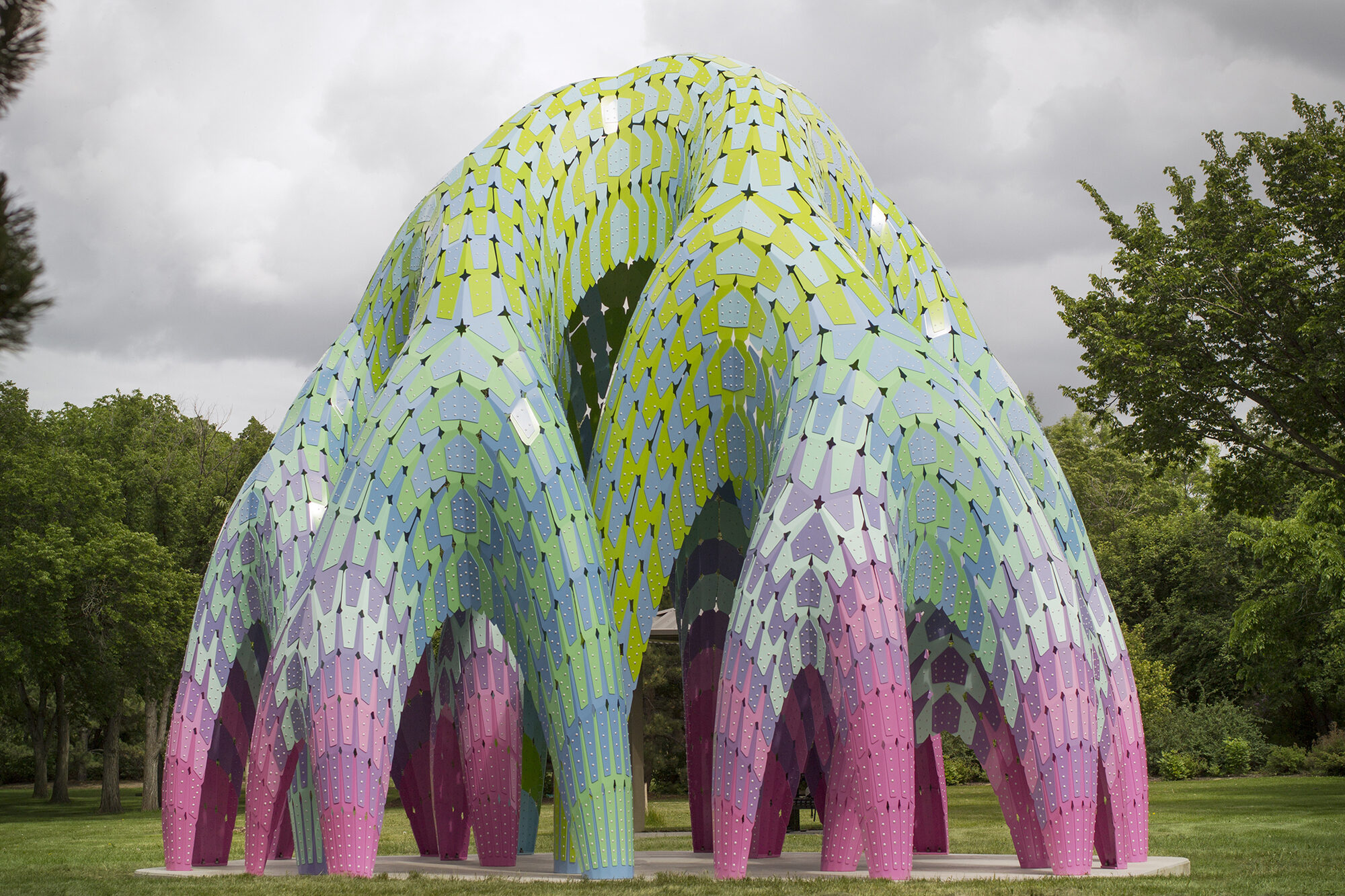
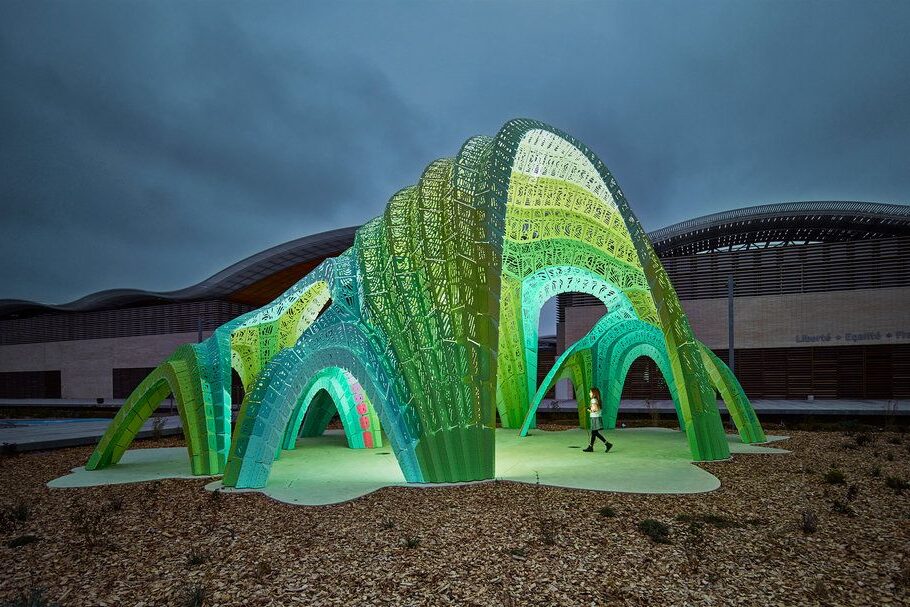
Digital Form-Finding – Generating the Base Geometry
The project began with a simple digital sketch, defining the overall footprint and curvature of the pavilion. Using parametric modeling, a dynamic form was generated, adapting to constraints such as structural efficiency, material behavior, and spatial requirements. The base structure consists of large sweeping arches, providing an open yet sheltered space.
Structural Logic – From Concept to Feasibility
To ensure that the design was not just aesthetically pleasing but also structurally sound, a computational framework was applied.
- The arches were optimized for load distribution, reducing material waste while maximizing stability.
- A perforated pattern was introduced, inspired by cellular structures, to enhance the play of light and shadow while reducing weight.
- Recursive geometric transformations created a sense of growth, reinforcing the organic nature of the pavilion.
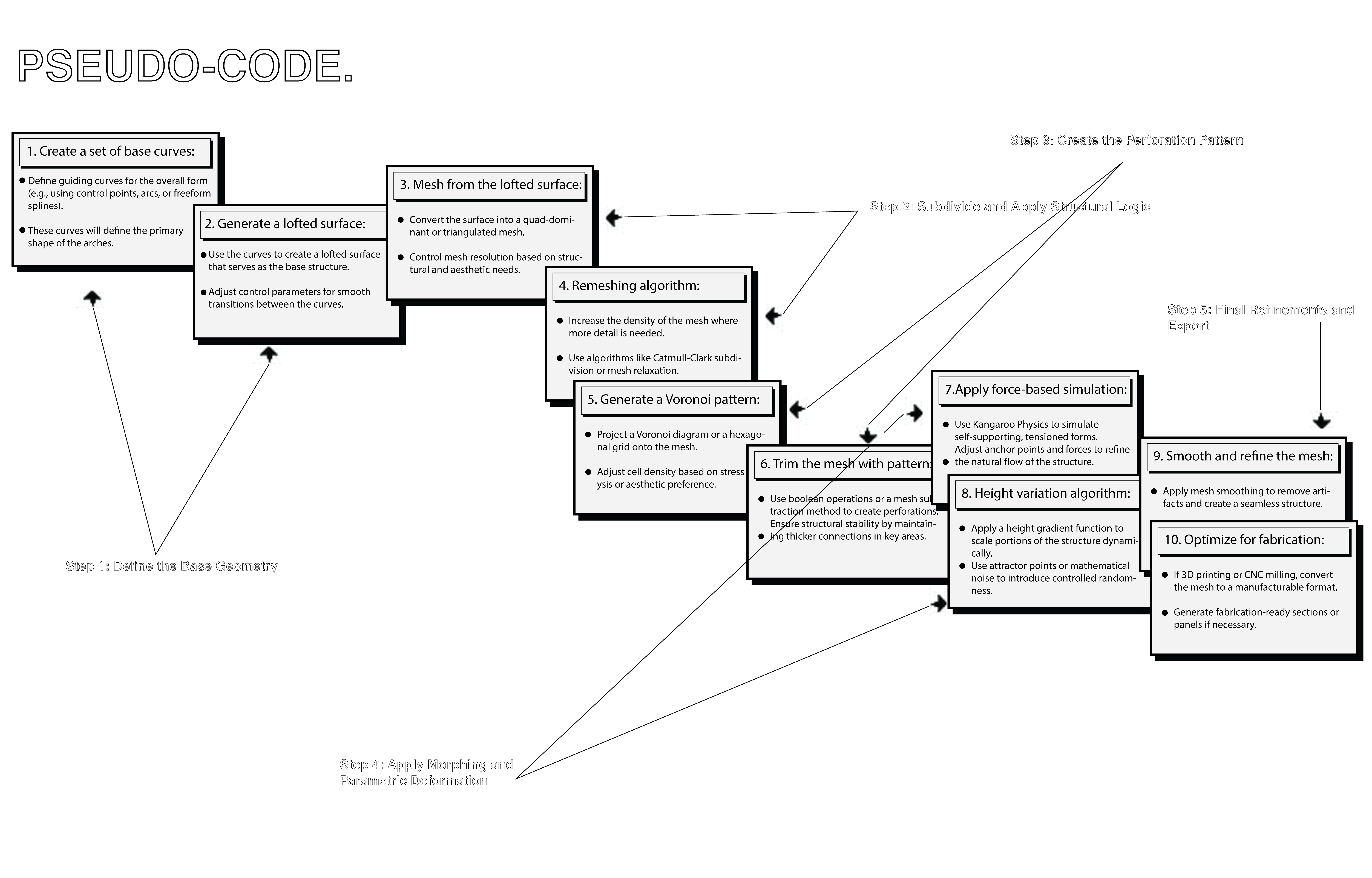
The pavilion design process begins with defining a set of base curves that guide the overall form, using control points, arcs, or freeform splines to establish a fluid and organic structure. These curves serve as the foundation for generating a lofted surface, ensuring smooth transitions and a continuous flow between the primary arches. Once the base geometry is established, it is converted into a mesh—either quad-dominant or triangulated—allowing for further refinement through recursive subdivision or remeshing. This step increases structural efficiency by optimizing mesh resolution, adding density where necessary while maintaining a balance between form and stability.
With the structural framework in place, a perforation pattern is applied using a Voronoi or hexagonal grid, projected onto the mesh to create an intricate interplay of light and shadow. Boolean operations or mesh subtraction techniques carve out the pattern while preserving key load-bearing areas to ensure structural integrity. Morphing and parametric deformations further refine the form, with force-based simulations helping to optimize self-supporting geometries. Height variations are introduced dynamically using attractor points or mathematical noise functions, generating an organic, undulating appearance. Finally, the entire mesh undergoes smoothing operations, eliminating artifacts and ensuring a seamless, fabrication-ready structure that embodies both digital precision and natural aesthetics.
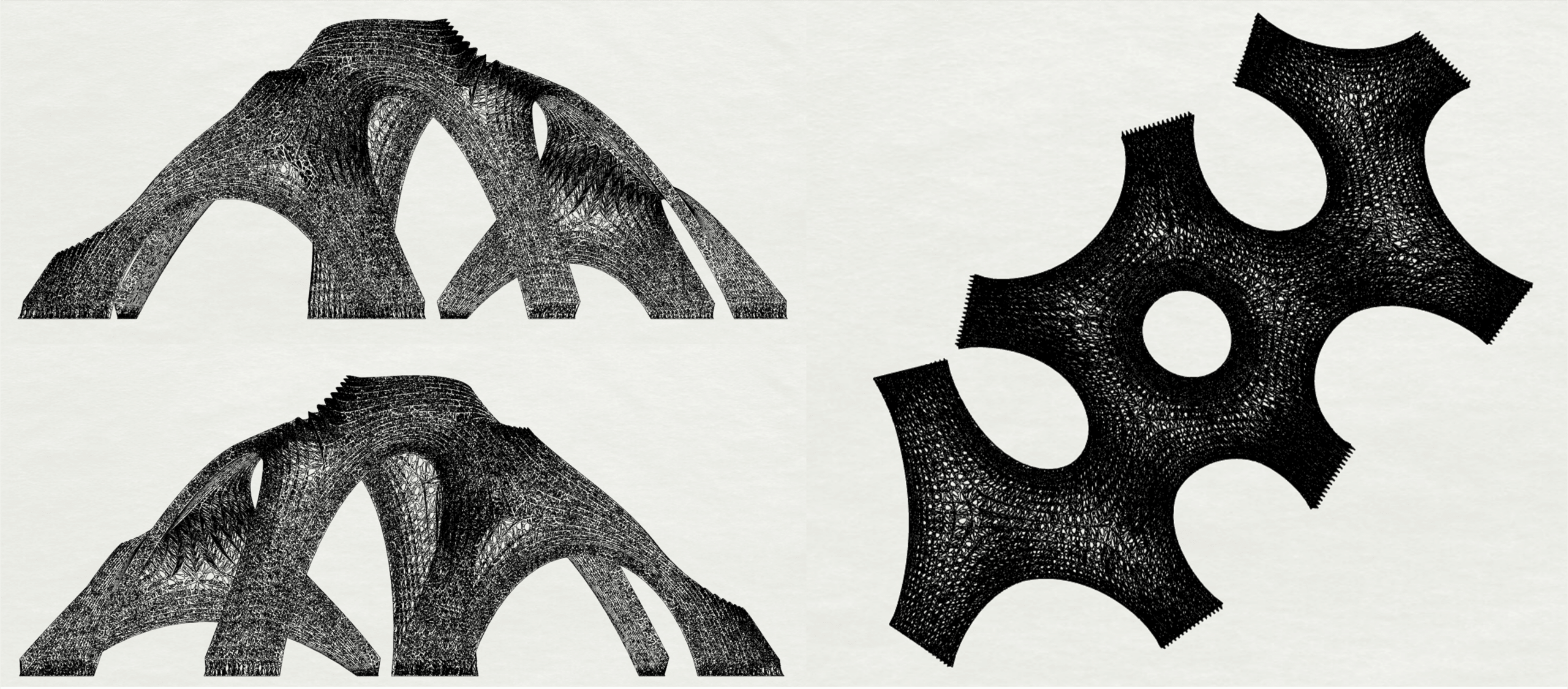
Flap Joining Strategy – Ensuring Constructability
A critical aspect of this design was the assembly strategy. The structure was broken down into smaller, flat panels with integrated flap joints for seamless connections. These flaps acted as extensions along the edges, allowing the components to be assembled efficiently without the need for excessive fasteners or adhesives.
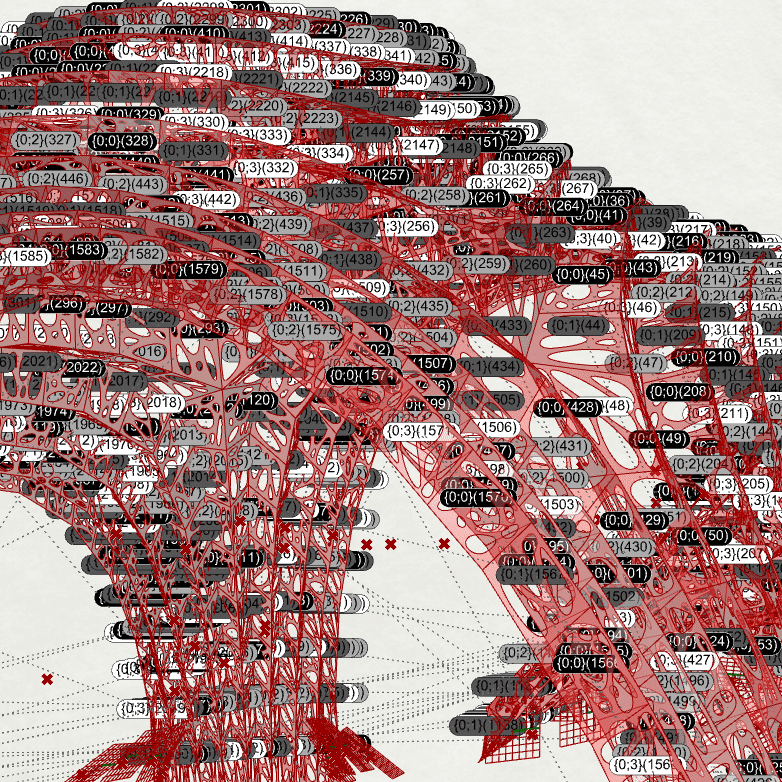
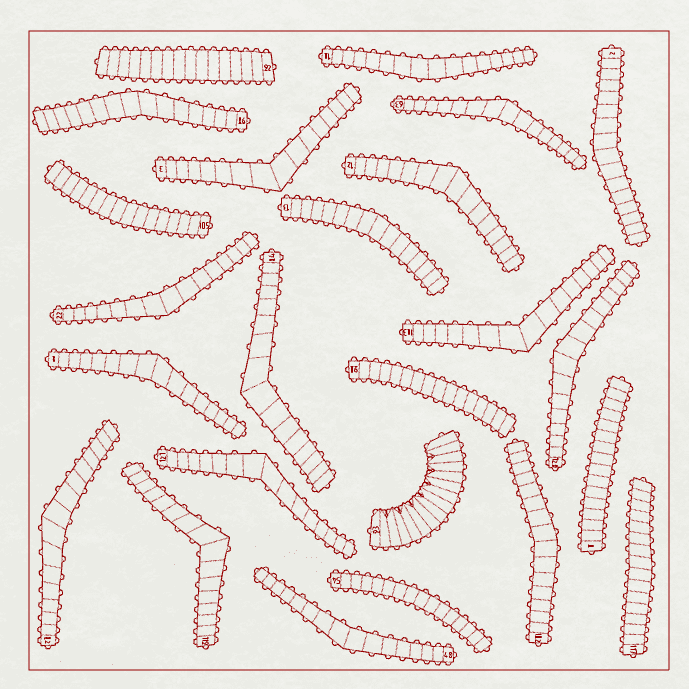
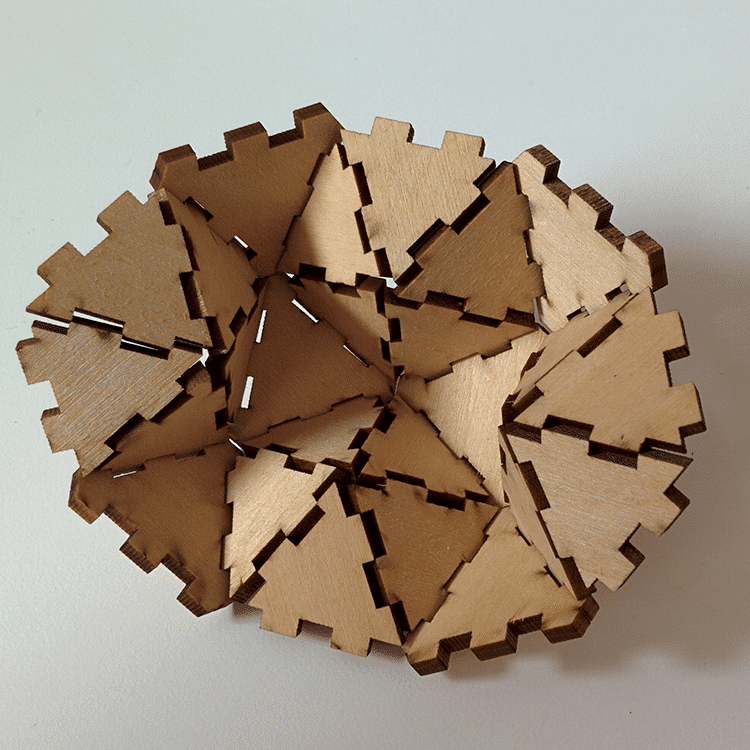
Digital Fabrication – Bringing the Design to Life
Once the digital model was finalized, fabrication-ready files were generated. This included:
- Panelization – Breaking down the complex form into manufacturable components.
- CNC Cutting & Laser Cutting – Translating the digital design into physical parts with high precision.
- Material Selection – Choosing lightweight yet durable materials to balance aesthetics and functionality.
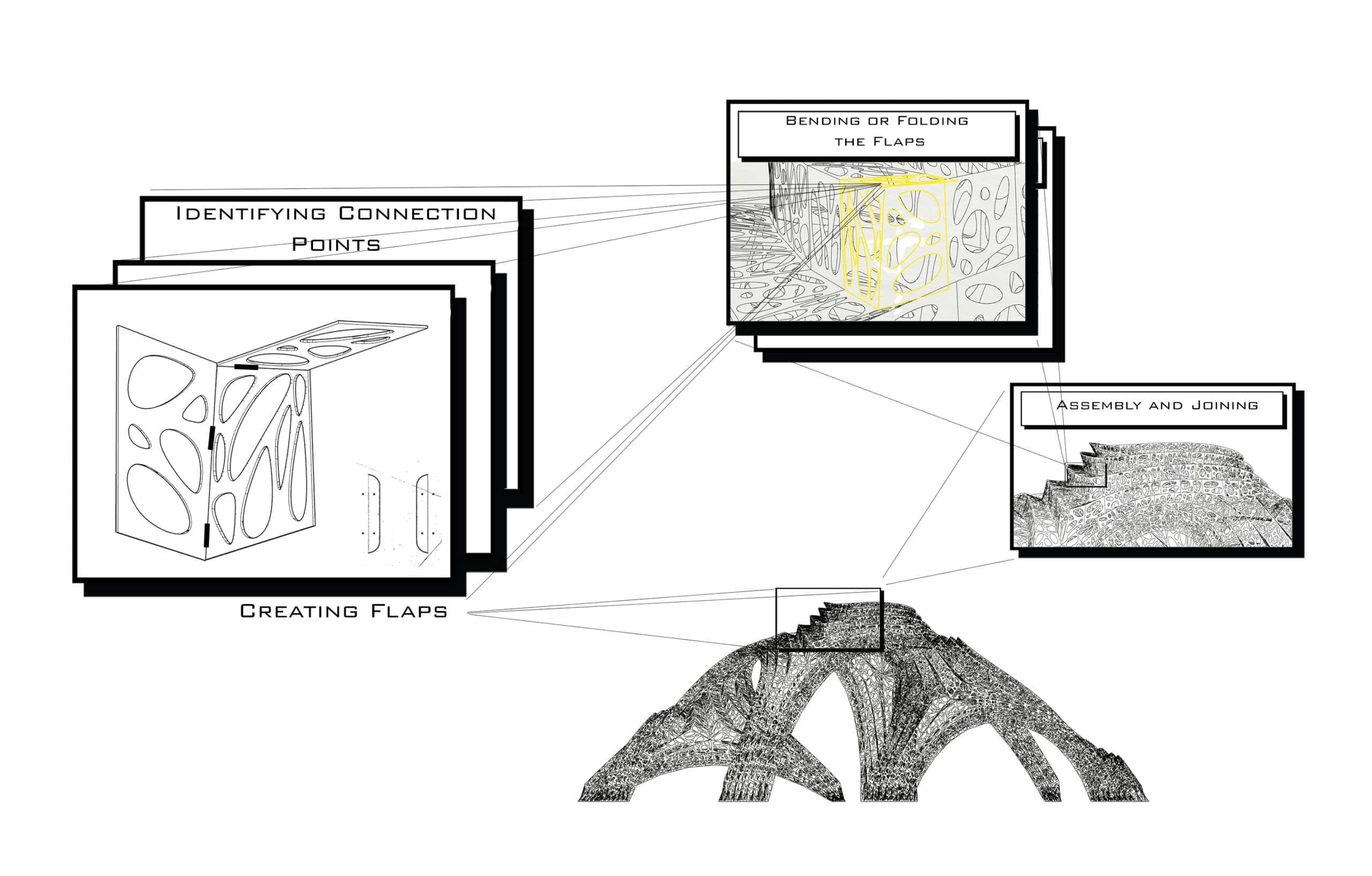
Assembly – Constructing the Pavilion
With all parts prepared, the assembly process began. The flap-joining technique ensured seamless connections, allowing the pavilion to come together like an intricate 3D puzzle. Gradual layering and careful alignment were key to achieving the final form.
Final Outcome – An Interactive, Multi-Sensory Experience
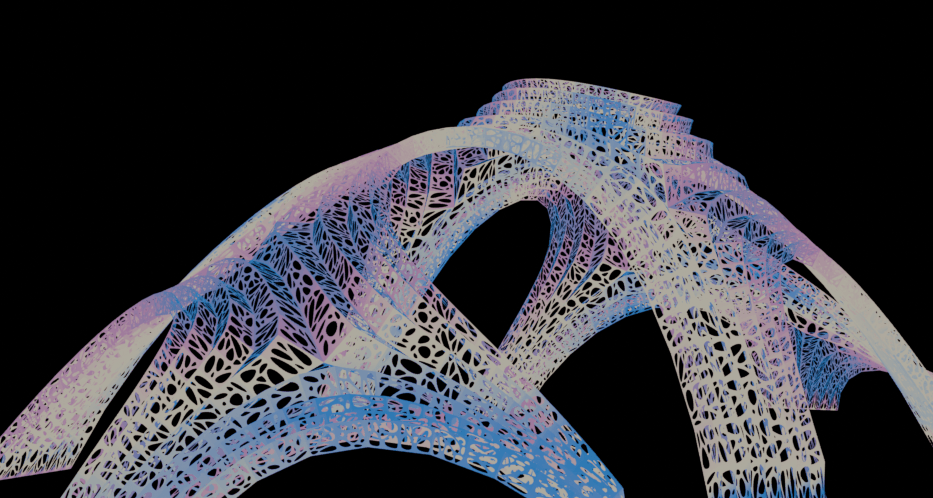
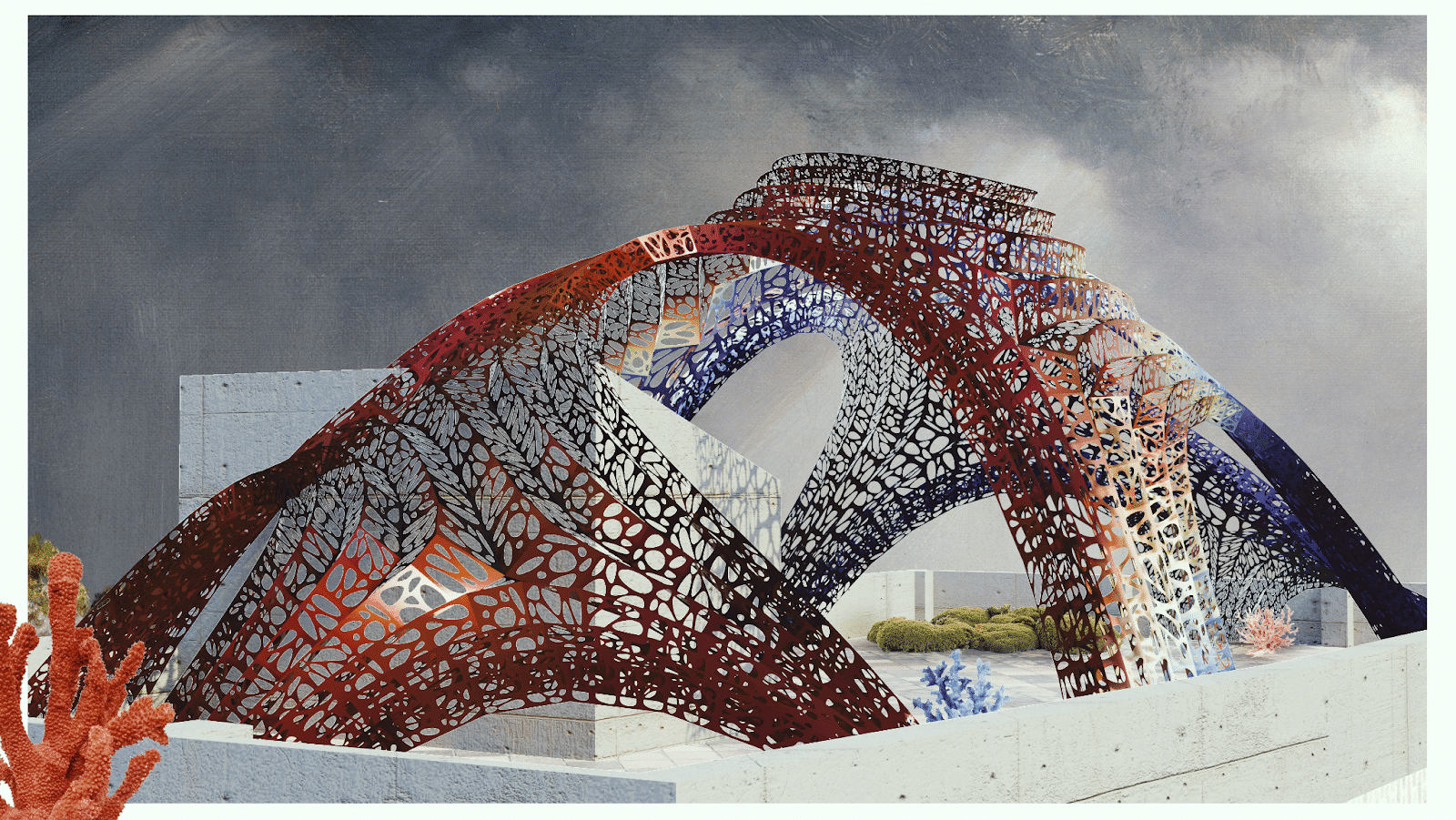
As the structure took shape, its true beauty was revealed through the interplay of light and shadow filtering through the perforated surfaces. The pavilion became more than just a shelter—it transformed into a dynamic architectural experience. Depending on the time of day, the pattern cast mesmerizing shadows, creating an ever-evolving atmosphere.

